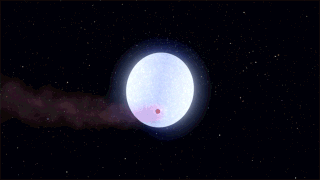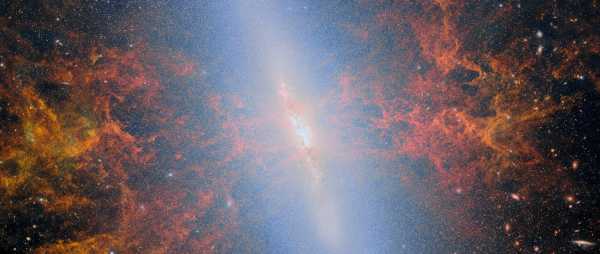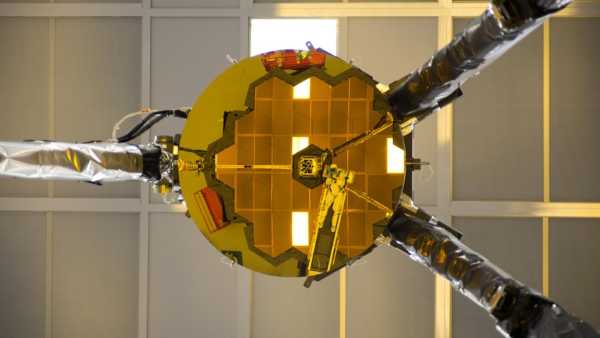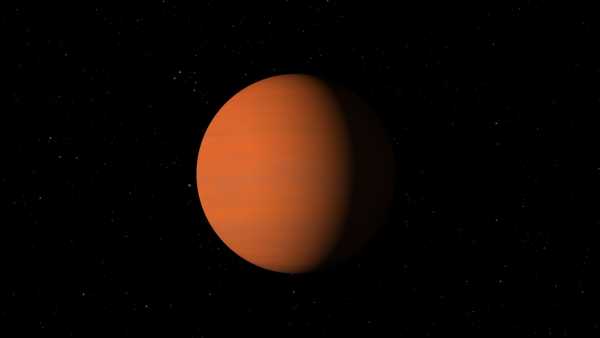
Exoplanet KELT-9b orbits its local sun once every day and a half. This close proximity makes KELT-9b the hottest exoplanet ever detected.
When planning your next interstellar vacation, avoid planet KELT-9b. This hot Jupiter (so named because it is roughly three times the size of that planet and extremely hot) orbits its sun so closely that a year there lasts just one-and-a-half Earth days. Not only will your trip be over in a flash, but it will also kill you — with a surface temperature of 7,800 degrees Fahrenheit (4,300 degrees Celsius), KELT-9b is hotter than any other exoplanet, as well as some stars.
Astronomers discovered this supremely sweltering world orbiting a star some 670 light-years from Earth in 2017, and are still learning fun new details about just how inhabitable it is. For example, KELT-9b is so hot that its atmosphere seems to be constantly melting on one side, a new study suggests.
In the study, published Jan. 7 in the Astrophysical Journal Letters, researchers watched KELT-9b through NASA’s Spitzer space telescope, which observes space in infrared light. This allowed the team to record subtle variations in the planet’s heat as it whizzed around its home star.
Because the planet it tidally locked — meaning the “day” side always faces the sun while the other side always points away in perpetual night — the team saw remarkable differences in temperature on either side of the planet. Using computer models, the researchers determined that gas and heat were being cycled across the two halves of the globe, resulting in a dramatic circle of atomic destruction and rebirth.
On the day side, the heat of the sun was so intense that hydrogen molecules in KELT-9b’s atmosphere were literally being ripped to shreds and blown across the planet (a process known as dissociation). While the night side was still extremely hot, at 4,150 F (2,300 C) temperature, it appeared to be just cool enough for loose atoms from the day side to recombine into hydrogen molecules. Eventually, though, those molecules flowed back to the day side, where they were ripped apart again.
That’s an appropriately apocalyptic climate for the hottest known planet in the universe. Much about the orb’s properties remains a mystery, however, especially on the relatively shielded night side. Luckily, scientists have a few hundred million years left to study the world, until KELT-9b’s local star swells into a red giant and engulfs it. Book your travels accordingly.
Sourse: www.livescience.com





